The hotspot strategy is working!
Hello friends!
I hope you had a lovely Victoria Day weekend! I am so excited to share this week’s COVID update!
Last week I shared a lot of positive news, and this week is even better. After a year of bad news, this is a welcome treat!
The bad news
Over 165 million cases of COVID-19 had been reported worldwide. Over 3.4 million people are reported to have died.
Canada has reported over 1.35 million cases of COVID-19, with over 25,000 deaths.
Some countries in South America and India are still battling significant COVID-19 waves.
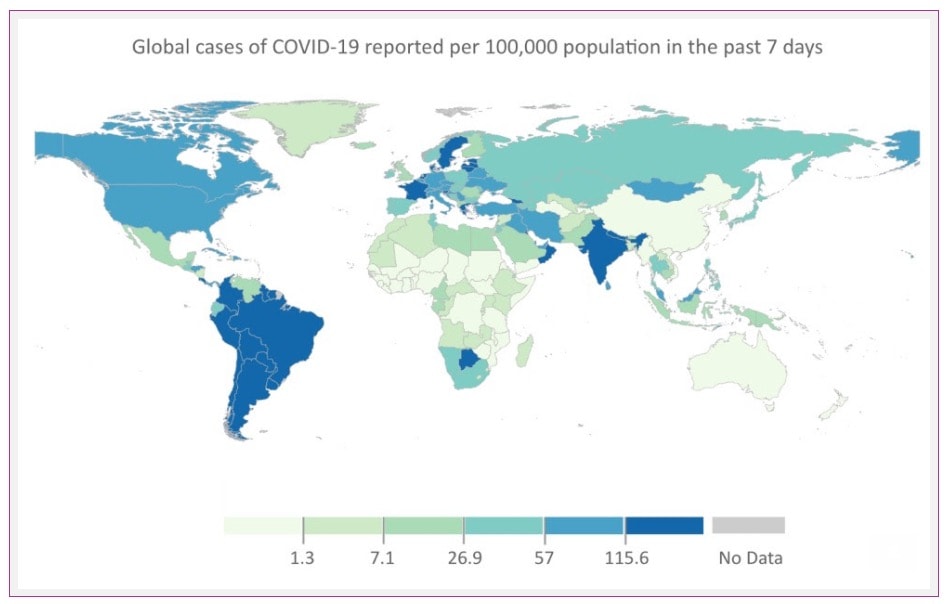
The good news
COVID-19 cases, positivity rate, and hospitalization rates are decreasing.
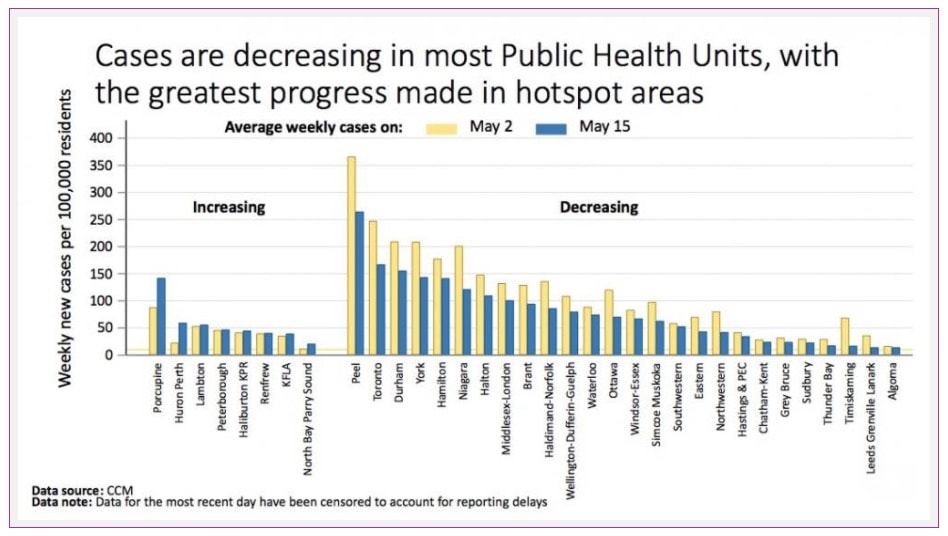

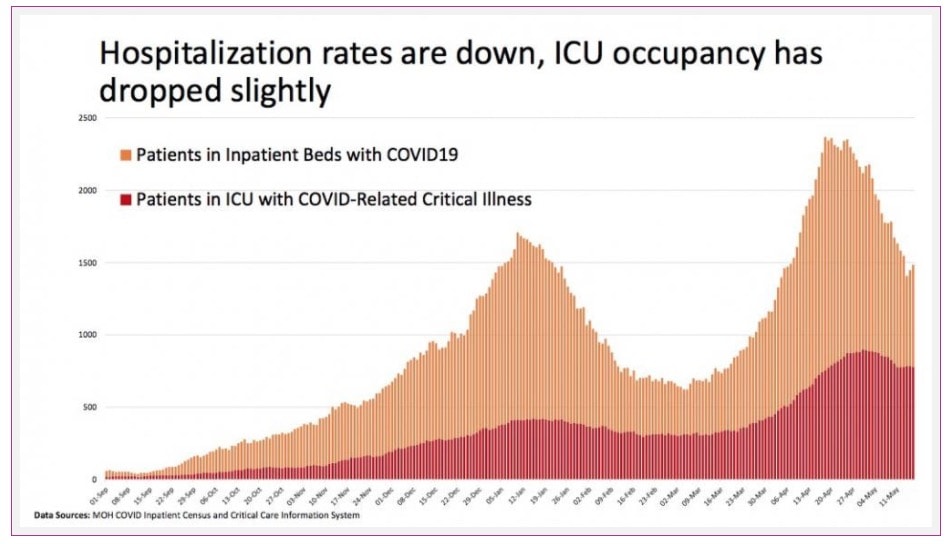
The Ontario Science Advisory released their latest projections. They anticipate that school reopening will increase cases but will likely prove manageable with public health measures and progress on vaccinations. However, delaying the reopening of schools until mid-June can help prevent a fourth wave and ensure we have a healthy summer.
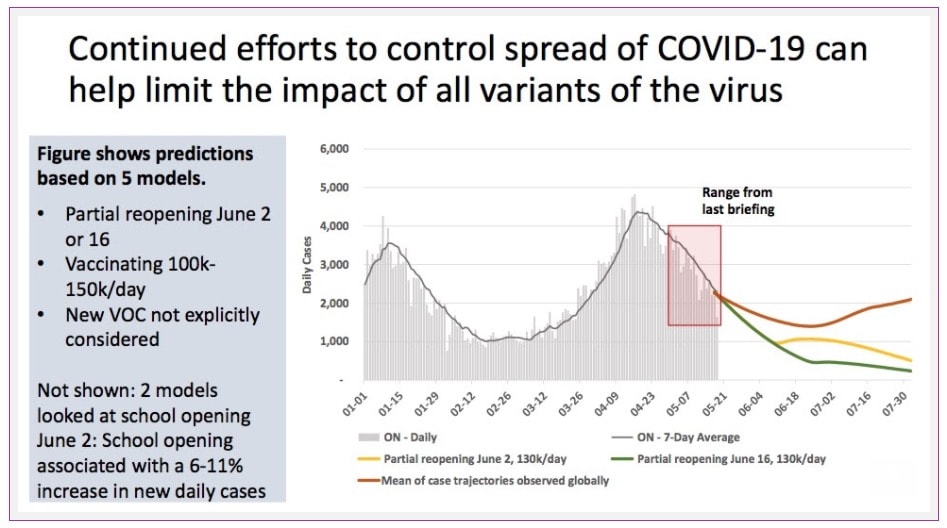
As of last week, Canada has vaccinated a more significant percentage of the population with at least one dose of a COVID-19 vaccine than the United States. 49% of the Canadian population has received at least one shot, compared to 48% of the U.S. The U.S. has fully vaccinated 38% of its population versus 4% of Canadians.
As of this week, people aged 12 and older will be able to schedule a COVID-19 vaccine appointment.
Pfizer pledged to deliver one billion doses of their vaccine to poorer nations in 2021 and another billion in 2022. These are sorely needed.
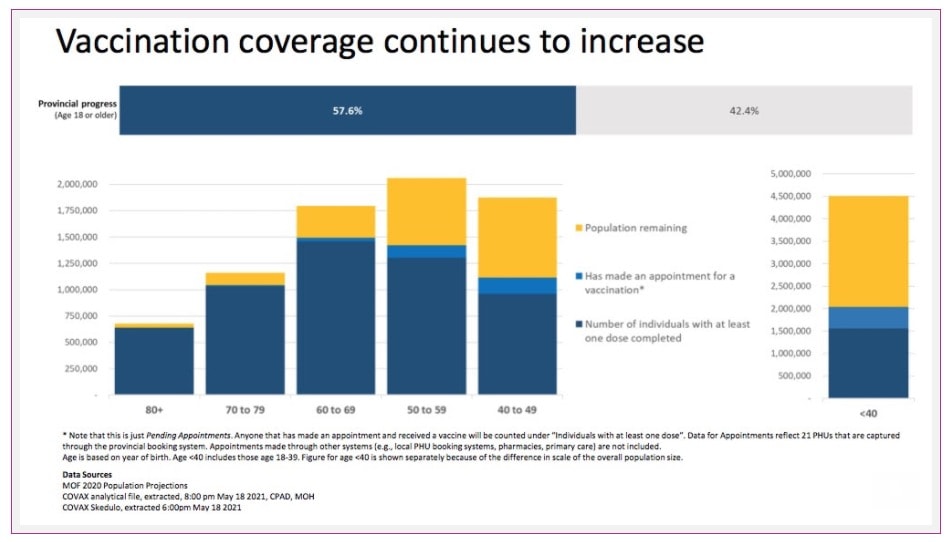
Do you remember these tables from weeks past? There was a lot of red and orange, signifying poor vaccine delivery in some regions. Look how much more green it is now!
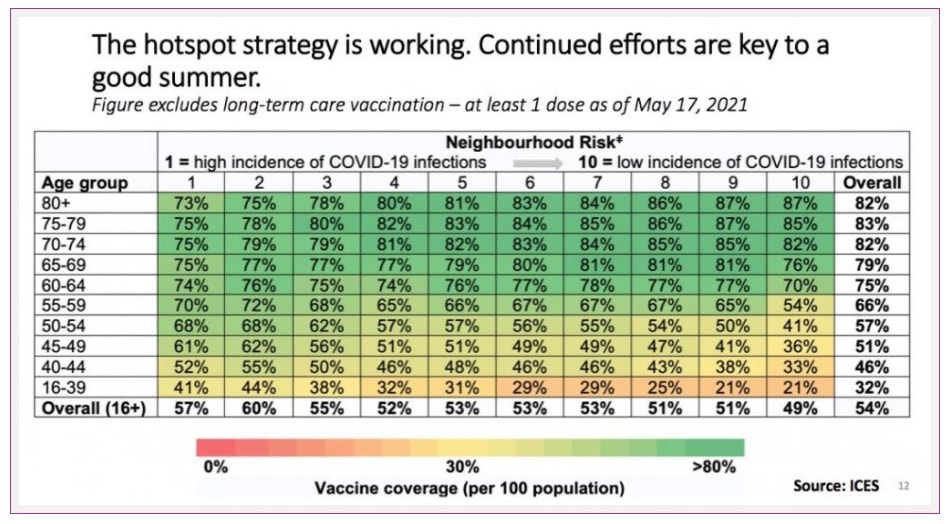
Ontario is taking tentative steps toward reopening amid the promising decline in COVID-19 cases. Outdoor recreational facilities will reopen with some restrictions as outdoor allowing outdoor gatherings of up to five people.
Outdoor activities are much safer than indoor activities and should be encouraged.
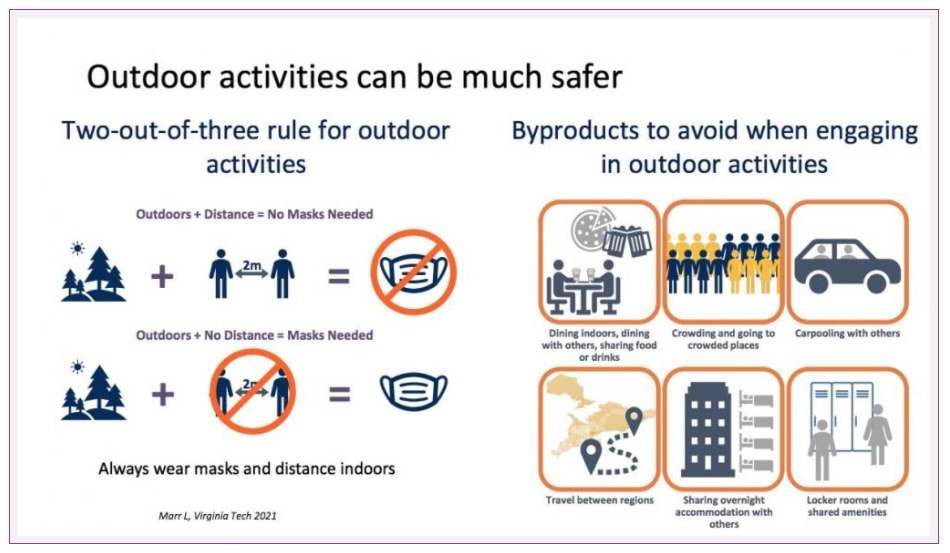
The Science Advisory gives some examples, such as local camping with your family versus camping elsewhere with people outside your household and playing sports with others while wearing a mask and singing outside with social distance. They suggest avoiding indoor facilities such as change rooms and clubhouses.
For mid-June and onward, the Ontario government announced its reopening plan. It looks pretty positive to me. Essentially, the more the population is vaccinated, the more we can open up and be in bigger groups. There are estimates that 30% or more of the population do not plan on getting vaccinated, though, so we’ll see.
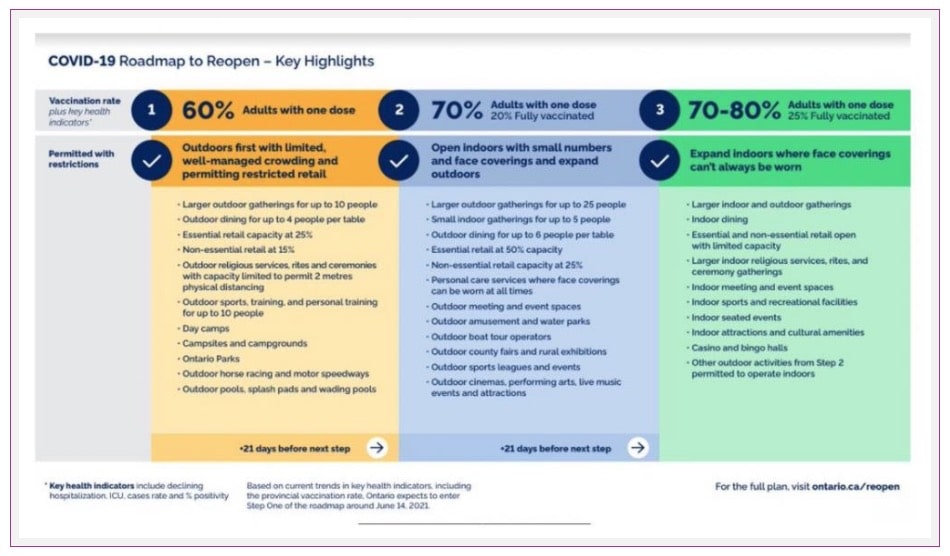
Question of the week
Millions of Canadians received a first dose of the AstraZeneca vaccine. What do they do now?
Beginning the week of May 24, 2021, people who received a first dose of AstraZeneca March 10-19 from Toronto, Peel, Hamilton, Peterborough, Wellington-Dufferin-Guelph, and Simcoe-Muskoka will be eligible to receive their second shot. Eligible individuals are encouraged to contact the pharmacy or primary care provider where they received their first dose to book an appointment beginning the week of May 24, 2021.
In Ontario, people who received a first AstraZeneca dose may choose to have a second dose of AstraZeneca at a 12-week interval OR wait for an mRNA vaccine later. It is yet to be determined which is the best vaccine to give next in a mixed vaccine series (e.g., having a dose of AZ and a second dose of one of the mRNA vaccines).
Patients will need to be informed about the benefits and risks of the choices. We should have more data soon to inform this decision.
If patients choose to receive a second AZ vaccine, an interval at or after 12 weeks provides good protection. Research data shows the vaccine is most effective with a dose interval of at least 12 weeks, delivering 80% protection against symptomatic COVID-19. Data shows only 69% protection against symptomatic disease with a dose interval of 9-12 weeks.
Regarding the risk of vaccine-induced thrombotic thrombocytopenia (VITT), VITT’s risk after the second dose of the AZ COVID-19 vaccine is much lower than after the first dose. Data from the United Kingdom suggests that the rate of VITT following the second dose is approximately 1/600,000 doses. They report 15 cases of VITT following 9 million second doses of AZ vaccine.
For people who decide to wait, and an mRNA vaccine is found to be safe and effective, an mRNA vaccine would be scheduled 16 weeks after the first AstraZeneca dose. A large clinical trial is underway to address missing vaccine types and will be reported in June 2021. Data from Spain shows this strategy may be helpful. Their cohort provided the first dose of AZ followed by a second dose of the Pfizer vaccine. Participants mounted a robust immune response following the second dose and had typical vaccine side effects that we expect from the COVID-19 vaccines. No people were hospitalized for side effects.
My silver lining of the week
For those of you who follow me on Instagram or Facebook, you likely noticed how happy I was this week. I have a newfound pep and excitement. I see the light at the end of this tunnel. We are not done with COVID-19. Experts believe a fourth wave is likely, though hopefully much less severe, and many countries are not currently fairing as well as we are, but I feel a significant change.
More people are being vaccinated every day, and I feel more confident with the vaccine roll-out now. I am so thrilled to have warmth and sunshine. We spend every second outside that we can. That fuels me.
I hope you had a lovely weekend and that you are healthy and safe.
Cheers to a fantastic Summer!


![[Dr. Dina News] IMPORTANT UPDATE re. VIRTUAL CARE](https://drdina.ca/wp-content/uploads/2021/01/dr-dina-kulik-kids-and-virtual-care-1a-400x250.jpg)
![[Dr. Dina News] COVID-19 Vaccine for Infants and Young Children.](https://drdina.ca/wp-content/uploads/2021/04/dr-dina-kulik-kids-and-vaccines-400x250.jpg)
![[Dr. Dina News] COVID-19 Vaccine for Infants and Young Children.](https://drdina.ca/wp-content/uploads/2022/04/DRD-1-400x250.jpg)






